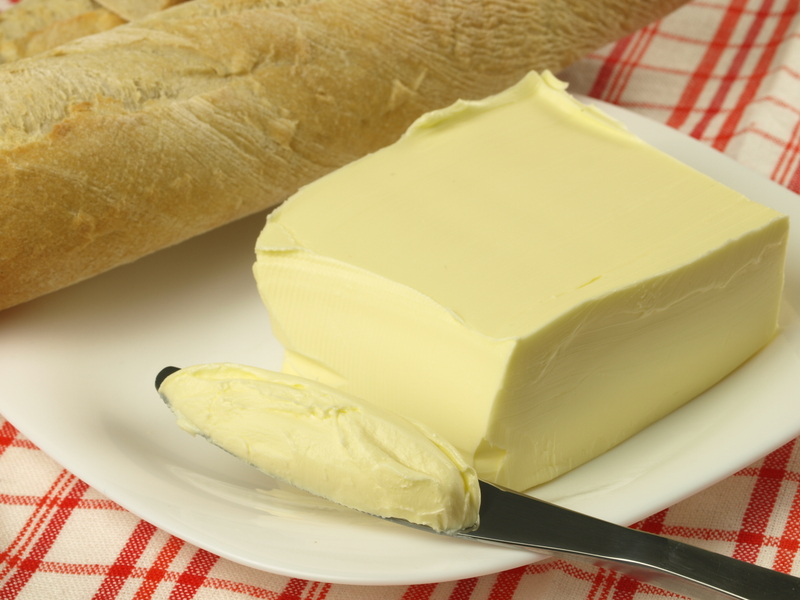Get Spotless Drapes with Right Curtain Cleaning Methods
Posted on 22/08/2025
Get Spotless Drapes with Right Curtain Cleaning Methods
Curtains and drapes do more than just filter sunlight and provide privacy--they add warmth, texture, and vibrant aesthetics to our living spaces. Yet, with time, dust, pet hair, pollen, odors, and even invisible mold spores settle in their fibers, leaving them dingy and lackluster. Are you staring at your window coverings and wondering how to restore their pristine look? Discover how to get spotless drapes with the right curtain cleaning methods and keep your home fresh and inviting.

Why Clean Curtains and Drapes Regularly?
You may not realize it, but cleaning your curtains is a necessity for a healthy home. Besides the obvious visual appeal, here are several reasons to incorporate regular curtain cleaning into your housekeeping routine:
- Allergen Control: Curtains harbor dust mites, pollen, and pet dander--all major triggers for allergies.
- Odor Elimination: Kitchen fumes, smoke, and moisture can leave your drapes smelling musty and unpleasant.
- Mold Prevention: Moisture trapped in fabric can result in mildew or mold, threatening your wellbeing.
- Extended Lifespan: Removing dirt and grit prevents premature wear, fading, and fiber breakdown.
- Brighter Interiors: Clean drapes allow more sunlight to filter in, brightening your living space.
If you love impeccable interiors, learning the best curtain and drape cleaning techniques will help keep your home healthy and attractive.
Understanding Curtain Fabrics and Their Cleaning Needs
Not all window coverings are created equal. From flowy sheers to heavy velvets, the type of curtain fabric dictates which cleaning methods are safest and most effective. Understanding the needs of your material ensures a thorough clean without damaging your precious drapes.
Common Curtain Fabrics
- Cotton: Lightweight; often washable but may shrink--always check labels.
- Linen: Similar to cotton, can wrinkle easily, may require gentle cleaning.
- Polyester: Durable and easy-care; often machine washable.
- Velvet: Luxurious, often requires professional dry cleaning.
- Silk: Delicate and typically hand-wash or dry-clean only.
- Sheers/Voiles: Light and delicate, usually require gentle washing.
Always check the cleaning tags on your drapes for manufacturer instructions before proceeding.
The Best Curtain Cleaning Methods for Spotless Results
There's no one-size-fits-all solution, but with several proven strategies, you can achieve spotless curtains and drapes year-round. Below, we cover different curtain cleaning methods tailored for various fabrics and degrees of soiling.
1. Regular Dusting & Vacuuming
You don't need to launder your curtains every week, but regular dust removal is essential. Use these simple techniques:
- Vacuum Weekly: Use a vacuum with an upholstery attachment. Start from the top and work downward with gentle strokes, especially along pleats where dust accumulates.
- Shake Out Monthly: Carefully remove curtains and shake them outside to dislodge loose dust and debris.
- Spot Dusting: For delicate sheers, a lint roller or soft brush can be effective for quick touch-ups.
2. Machine Washing Curtains
For many household curtains, machine washing is a convenient way to keep them looking pristine. Here's what to consider:
- Read the Label: Always check care instructions before proceeding.
- Pre-Treat Stains: Use a mild stain remover on any visible spots. Test on an inconspicuous area first.
- Remove Hooks/Rings: Avoid damaging your machine and the drapes.
- Gentle Cycle: Select a cold-water, gentle or hand-wash cycle using mild detergent.
- Low Spin: Excessive spinning may crease or stretch fabrics.
- Air Dry: Hang curtains back while still damp to prevent wrinkles--avoid direct sunlight to prevent fading.
*Note: Heavier curtains may need to be washed individually or in larger commercial washers to avoid overloading your machine.
3. Hand Washing Curtains
For delicate drapes or those with special trims, hand washing is a gentler alternative. Follow these steps:
- Fill a clean tub or basin with lukewarm water.
- Add a small amount of gentle detergent.
- Submerge your curtains and gently swirl--avoid twisting or scrubbing to preserve fibers.
- Rinse thoroughly with clean water.
- Gently press out excess water (do not wring).
- Hang to dry, reshaping pleats and folds as needed.
Silk, lace, and antique drapes typically respond best to this method.
4. Dry Cleaning Drapes
Certain curtain fabrics--especially those with vivid dyes, linings, or elaborate designs--require professional handling. If your curtains say 'dry clean only', don't ignore the warning. Dry cleaning helps avoid shrinkage, dye-bleed, and texture loss.
- Velvet, wool, and silk drapes almost always require professional help.
- Take them to a reputable dry cleaner experienced in treating drapery.
- Ask about 'same-day' service if you prefer not to leave windows bare for long periods.
5. Steam Cleaning Curtain Panels
One of the most effective ways to achieve spotless drapes (especially if you don't want to take them down) is by using a steam cleaner. Steam removes dirt, kills bacteria and dust mites, and refreshes fabric without chemicals:
- Prep Area: Vacuum drapes first to remove surface dust.
- Choose the Right Attachment: Most steamers come with a fabric or upholstery head.
- Begin at the Top: Slowly move downward in vertical strokes.
- Keep Steamer Moving: Avoid saturating one spot or holding the steamer too close to the fabric.
- Let Air Dry: Allow drapes to dry completely after steaming.
*Tip: Steam cleaning is perfect for heavy drapes and hanging them back up immediately refreshes your room's ambiance!
Spot Cleaning Curtain Stains
Accidents happen--be it wine spills, fingerprint smudges, or pet mishaps. For quick stain fixes:
- Blot, Don't Rub: Use a clean, damp cloth to dab spills immediately.
- Use Mild Solutions: For most water-safe fabrics, a mixture of water and a drop of mild detergent works wonders.
- Test First: Always test any cleaning solution on an inconspicuous corner first.
- Avoid Overwetting: Too much water can cause shrinkage or rings.
Special Considerations for Curtain Cleaning
Blackout and Thermal Curtains
These drapes often have a synthetic lining. Their labels might state "spot clean only," since machine washing could damage the lining or reduce its effectiveness. Gently vacuum and spot clean as needed.
Embellished or Decorative Curtains
Trims, beads, and embroidery often require professional cleaning. In these cases, avoid washing or soaking to prevent damage.
Frequently Asked Curtain Cleaning Questions
How Often Should I Clean My Curtains?
- Dust Weekly: Vacuum or shake to remove airborne debris.
- Wash Every 6-12 Months: Depending on fabric type and environmental factors (e.g., city pollution vs. countryside air), plan a deep clean at least once or twice a year.
- Spot Clean As Needed: Address stains right away to prevent permanent marks.
How Can I Keep Curtains Clean Between Washes?
- Keep windows closed during heavy pollen seasons.
- Use air purifiers to trap fine dust and allergens.
- Ban smoking indoors--curtains quickly absorb smoke odors.
- Encourage pets to avoid lounging in window areas.
Are Homemade Curtain Cleaning Solutions Safe?
Many common household detergents and gentle cleansers are safe for curtains--just avoid bleach, as it can damage fibers and cause discoloration. For a DIY approach, mix a teaspoon of mild liquid soap (like dish soap) in a quart of cool water. Always patch test before widespread use.
Pro Tips for Restoring Drapes to Spotless Perfection
- Iron or Steam: Iron on the reverse side or use a fabric steamer to remove lingering wrinkles.
- Freshen with Scent: After cleaning, lightly mist with fabric refresher or essential oil-infused water for a lingering, fresh scent.
- Store Properly: If swapping out seasonal drapes, store them in breathable fabric bags to avoid mildew.
- Protect from Sun: Consider curtain liners or UV-blocking films on windows to prevent fading.

When to Call In a Professional Curtain Cleaning Service
Certain situations warrant the expertise of a curtain cleaning company:
- Extremely large, heavy, or floor-length drapes
- Expensive or antique fabrics with sentimental value
- Persistent odors or visible mold/mildew stains
- Time constraints or mobility issues
Professional curtain cleaners use specialized equipment and techniques, including onsite cleaning and offsite deep cleaning, ensuring your window treatments remain both beautiful and hygienic.
Conclusion: Enjoy Spotless Drapes Every Day
Gorgeous, spotless drapes instantly uplift any room in your home. By choosing the right curtain cleaning method for your fabric type and needs, you enhance your home's air quality, showcase your style, and prolong the lifespan of your window coverings. Whether you go DIY or hire a professional, smart maintenance and prompt care mean brighter, healthier living spaces all year round.
Don't let dust, stains, or odors ruin your decor. Take action today, and experience the joy of fresh, immaculate window treatments every time you enter the room!
Ready for Spotless Curtains?
Try these curtain cleaning methods at home--or schedule a professional service for a worry-free, dazzling transformation!



